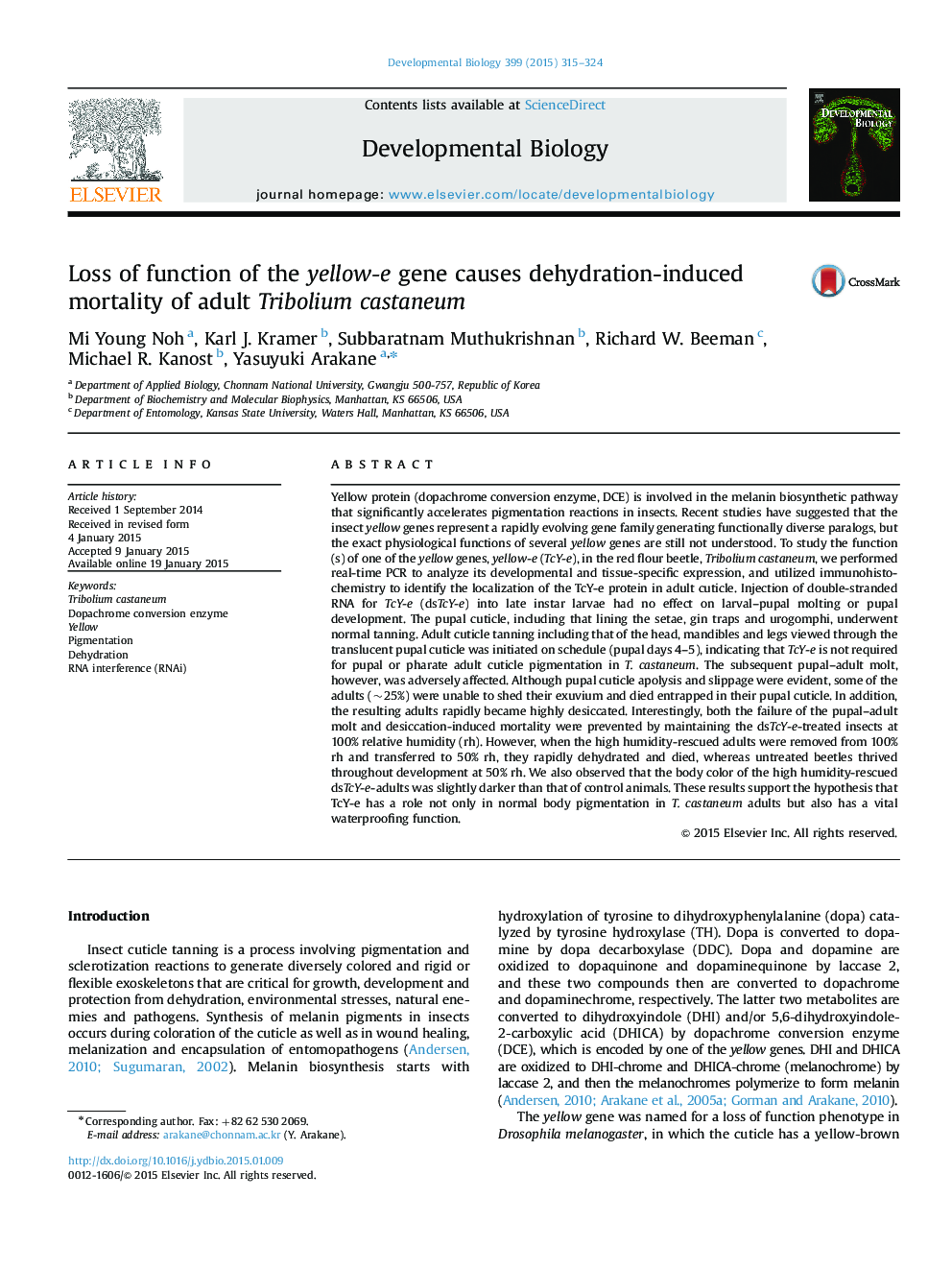| کد مقاله | کد نشریه | سال انتشار | مقاله انگلیسی | نسخه تمام متن |
|---|---|---|---|---|
| 2172954 | 1093655 | 2015 | 10 صفحه PDF | دانلود رایگان |

• Yellow-e gene (TcY-e) expression during development of Tribolium by real-time PCR.
• RNAi-based functional study of TcY-e.
• Identification of dehydration and pigmentation phenotype of TcY-e.
• Rescue of dehydration phenotype by high humidity.
Yellow protein (dopachrome conversion enzyme, DCE) is involved in the melanin biosynthetic pathway that significantly accelerates pigmentation reactions in insects. Recent studies have suggested that the insect yellow genes represent a rapidly evolving gene family generating functionally diverse paralogs, but the exact physiological functions of several yellow genes are still not understood. To study the function(s) of one of the yellow genes, yellow-e (TcY-e), in the red flour beetle, Tribolium castaneum, we performed real-time PCR to analyze its developmental and tissue-specific expression, and utilized immunohistochemistry to identify the localization of the TcY-e protein in adult cuticle. Injection of double-stranded RNA for TcY-e (dsTcY-e) into late instar larvae had no effect on larval–pupal molting or pupal development. The pupal cuticle, including that lining the setae, gin traps and urogomphi, underwent normal tanning. Adult cuticle tanning including that of the head, mandibles and legs viewed through the translucent pupal cuticle was initiated on schedule (pupal days 4–5), indicating that TcY-e is not required for pupal or pharate adult cuticle pigmentation in T. castaneum. The subsequent pupal–adult molt, however, was adversely affected. Although pupal cuticle apolysis and slippage were evident, some of the adults (~25%) were unable to shed their exuvium and died entrapped in their pupal cuticle. In addition, the resulting adults rapidly became highly desiccated. Interestingly, both the failure of the pupal–adult molt and desiccation-induced mortality were prevented by maintaining the dsTcY-e-treated insects at 100% relative humidity (rh). However, when the high humidity-rescued adults were removed from 100% rh and transferred to 50% rh, they rapidly dehydrated and died, whereas untreated beetles thrived throughout development at 50% rh. We also observed that the body color of the high humidity-rescued dsTcY-e-adults was slightly darker than that of control animals. These results support the hypothesis that TcY-e has a role not only in normal body pigmentation in T. castaneum adults but also has a vital waterproofing function.
Figure optionsDownload high-quality image (270 K)Download as PowerPoint slide
Journal: Developmental Biology - Volume 399, Issue 2, 15 March 2015, Pages 315–324